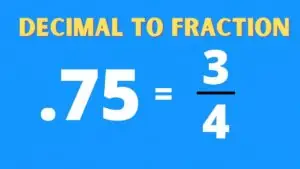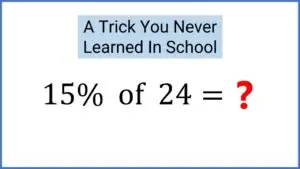In the realm of mathematics, the term “sum” holds great significance. It refers to the result obtained by combining or adding two or more numbers or items. Whether you are a student exploring the basics of arithmetic or delving into complex mathematical concepts, understanding the meaning of sum is crucial. In this article, we will explore the definition of sum, various formulas associated with it, and examples to enhance your comprehension.

✅ AI Essay Writer ✅ AI Detector ✅ Plagchecker ✅ Paraphraser
✅ Summarizer ✅ Citation Generator
What is Sum?
Sum, in its simplest form, represents the outcome of adding numbers or terms together. It is a fundamental operation that allows us to combine quantities and determine their total value. Whenever we encounter a situation that involves adding or combining numbers, the result obtained is referred to as the sum. Additionally, if you’re learning about mathematics, you might wonder, what does total mean in Math, since many people get it confused with the term ‘sum’. Total is another term used synonymously with sum, representing the combined value of a set of numbers or quantities.
Importance of Sum in Mathematics
Basic Arithmetic
Addition: The concept of sum forms the foundation of addition, which is one of the fundamental operations in arithmetic. It allows us to find the total value when two or more numbers are combined.
Subtraction: Subtraction, the inverse operation of addition, involves finding the difference between two quantities. It relies on the concept of sum to determine the value being subtracted.
Advanced Mathematical Concepts
Algebra: In algebraic equations, the sum represents the outcome of combining terms or expressions.
Calculus: The concept of sum is extended in calculus through the integration process, where sums are used to find the total value of a continuous function over a specific interval.
Formulas for Finding Sum
- Summation Notation (∑): In the realm of mathematics, the symbol ∑, known as sigma, is not just a way to represent a sum; it holds particular significance in fields like statistics, where sigma in statistics often refers to the standard deviation of a population. It is commonly employed when a long list or sequence of numbers needs to be added together.
- Sum of Two Numbers: To find the sum of two numbers, we simply add the numbers together. For example, the sum of 5 and 7 is 12.
- Sum of Digits: a. One-digit Numbers: The sum of two one-digit numbers, such as 3 and 4, can be obtained by adding the digits diagonally across the plus symbol. For instance, 3 + 4 = 7. b. Two-digit Numbers: When adding two-digit numbers, we add the ones place digits first, followed by the tens place digits, taking any carryovers into account.
- Sum of a Sequence: a. Sum of First n Natural Numbers: The sum of the first n natural numbers can be calculated using the formula S = n(n + 1)/2. b. Sum of Odd Numbers: The sum of the first n odd numbers can be determined using the formula S = n^2. c. Sum of Even Numbers: The sum of the first n even numbers can be found using the formula S = n(n + 1).
Examples
Sum of Two-Digit Numbers
Consider the numbers 89 and 22.
To find their sum: Step 1: Add the ones place digits: 9 + 2 = 11. Step 2: Add the tens place digits: 8 + 2 = 10. Step 3: The final sum is obtained by combining the results from Step 1 and Step 2, resulting in 111.
Sum of First n Natural Numbers
Let’s find the sum of the first 15 natural numbers using the formula S = n(n + 1)/2: S = (15 * 16)/2 = 120.
Conclusion
Understanding the concept of sum is integral to mastering various mathematical operations. From basic arithmetic to advanced concepts in algebra and calculus, the sum provides us with a valuable tool for combining and calculating quantities. By grasping the meaning of sum and familiarizing yourself with the associated formulas and examples, you will develop a solid foundation in mathematics and be better equipped to tackle more complex problems. So, embrace the power of the sum and let it unlock the wonders of mathematics for you.
FAQ
What is the difference between sum and product in Math?
In mathematics, the sum refers to the result obtained by adding numbers or terms together, whereas the product represents the outcome of multiplying numbers or terms. The sum focuses on combining quantities to determine their total value, while the product emphasizes the result of multiplication.
How is the sum symbol represented in mathematical notation?
The sum symbol is represented by the capital Greek letter sigma (∑). It is commonly used in mathematical notation to indicate that a series of numbers or terms should be added together.
Are there any special rules for summing fractions in Math?
Yes, there are rules for summing fractions. To add fractions, you need to ensure they have a common denominator. If the fractions have different denominators, you must find the least common multiple (LCM) of the denominators and convert each fraction to an equivalent fraction with the common denominator. Then, you can add the numerators and keep the common denominator unchanged.
Can negative numbers be added in Math? How?
Yes, negative numbers can be added in mathematics. Adding negative numbers is equivalent to subtracting their absolute values. For example, adding -5 to -3 would result in -8. To add negative numbers, simply add their magnitudes and assign the negative sign to the sum.
How do you find the sum of an arithmetic series?
To find the sum of an arithmetic series, you can use the formula: S = (n/2) × [2a + (n-1)d], where S represents the sum, n is the number of terms in the series, a is the first term, and d is the common difference. Alternatively, you can also use the formula: S = (n/2) × (a + l), where l represents the last term of the series.
Follow us on Reddit for more insights and updates.





Comments (0)
Welcome to A*Help comments!
We’re all about debate and discussion at A*Help.
We value the diverse opinions of users, so you may find points of view that you don’t agree with. And that’s cool. However, there are certain things we’re not OK with: attempts to manipulate our data in any way, for example, or the posting of discriminative, offensive, hateful, or disparaging material.